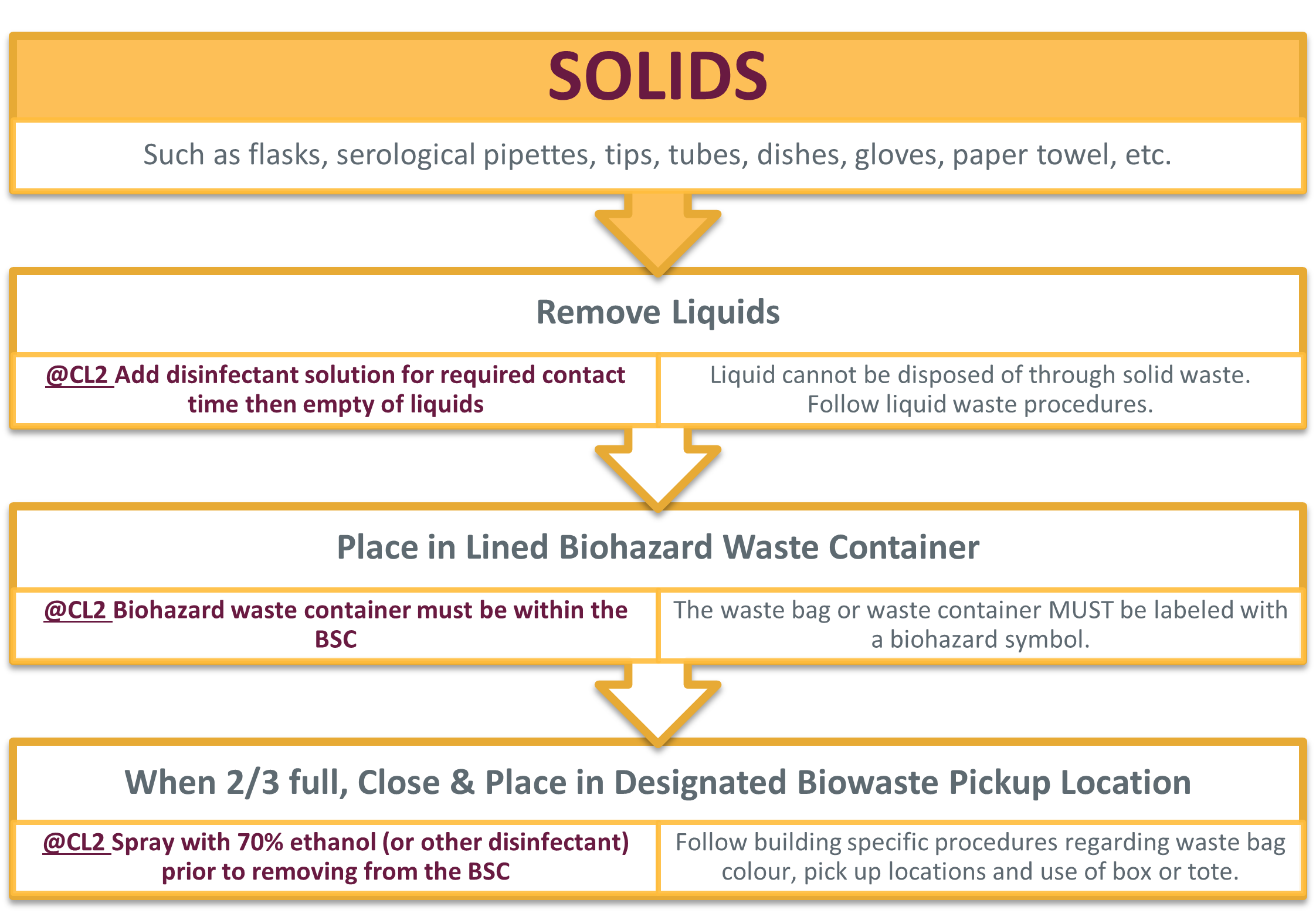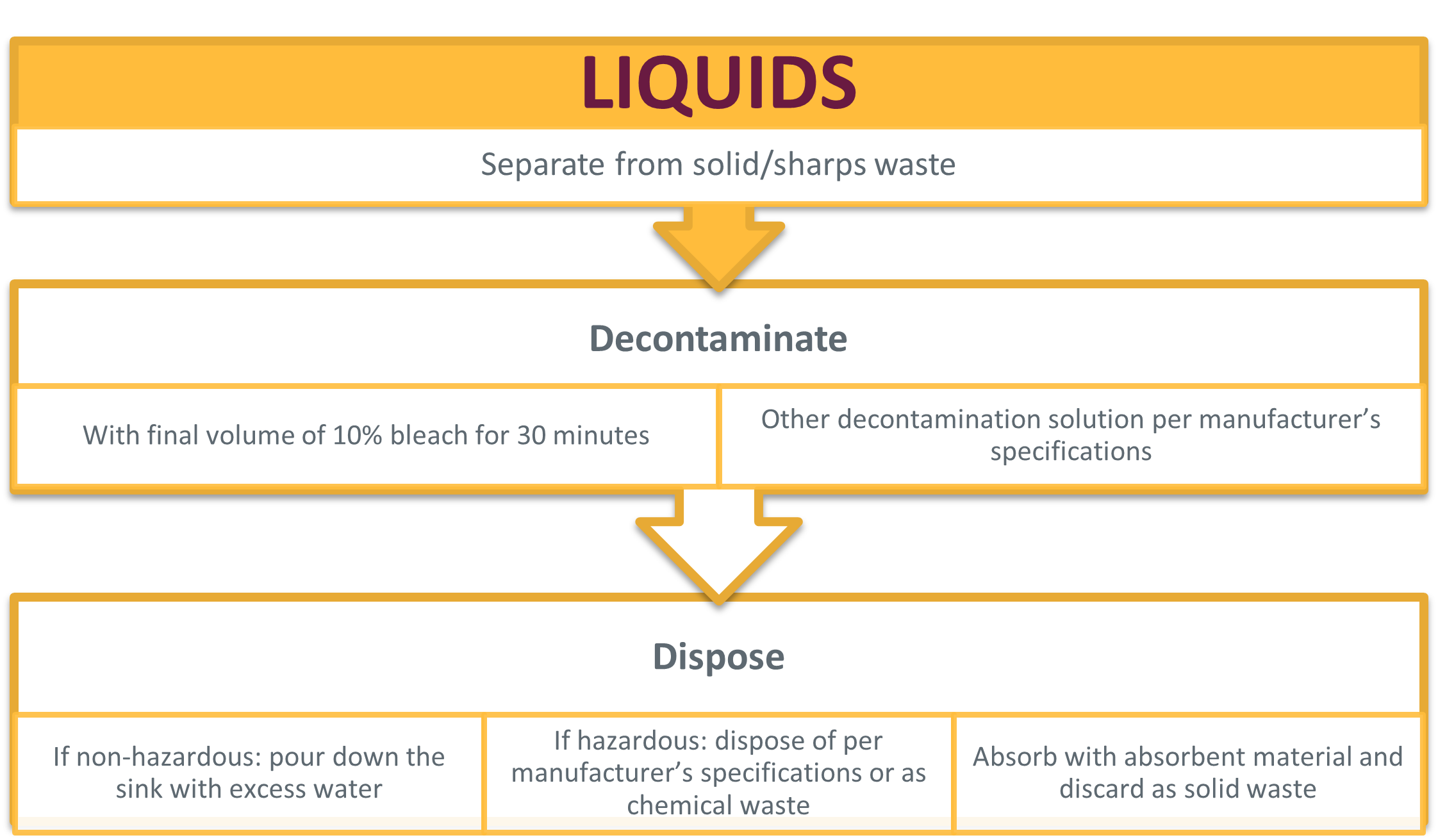Biohazard Waste
Frequently Asked Questions
Plastic pipette tips are not sharps since they do not puncture the skin, however pipette tips can puncture waste bags and must be segregated. Collect biohazard plastic pipette tips in any plastic bottle with a screw cap lid and label as "Biohazard Pipette Tips". Once 3/4 full, this container can be closed and discarded into the solid biohazardous waste container. Collect non-biohazard plastic pipette tips in a plasic bottle or box which is clearly labelled "Non-Biohazard Pipette Tips". Once full, this container can be disposed in the appropriate solid waste stream.
Although it may be food grade material, any animal part used at McMaster for non-food purposes should have formal approval for use and be returned to the appropriate areas within McMaster for disposal. This also applies to preserved animals for dissection. Contact the FHS Safety Office at 24956 or EOHSS at 24352 for assistance in approval and identifying the appropriate disposal.
Freezer cleanups generate a large amount of liquid from the samples themselves and the snow and ice cleared from the cold unit. Samples can be handled in one of three ways.
- Place samples in BSC overnight. The next morning aspirate all liquids and dispose as biohazard liquid waste per your lab SOPs. Empty tubes can then be disposed as solid biohazard waste as per your lab SOPs.
- Line an autoclave bag (which is thicker than other waste bags) with paper towels or other absorbent material such as Yesterday's News Cat Litter. Discard the tubes into the autoclave bag. Ensure all liquids are absorbed, and then close the bag and discard into biohazard waste.
- Arrange to receive biohazard pails from FHS Safety Office or EOHSS and follow the packup and pickup procedures established for your building.
If a large box or container is packed with small pieces of broken glass including histological slides, coverslips, Pasteur pipettes, hematrocrit tubes or other small glass items, the box becomes incredibly heavy and housekeeping will not remove it. You will need to take the container back to your laboratory and repack it into multiple lighter boxes.


